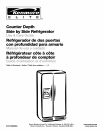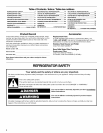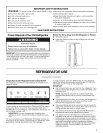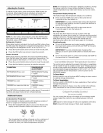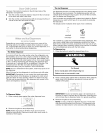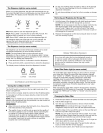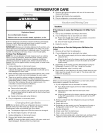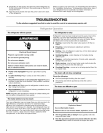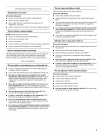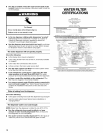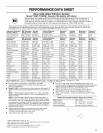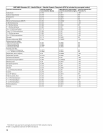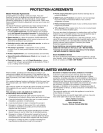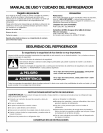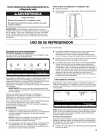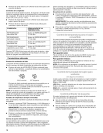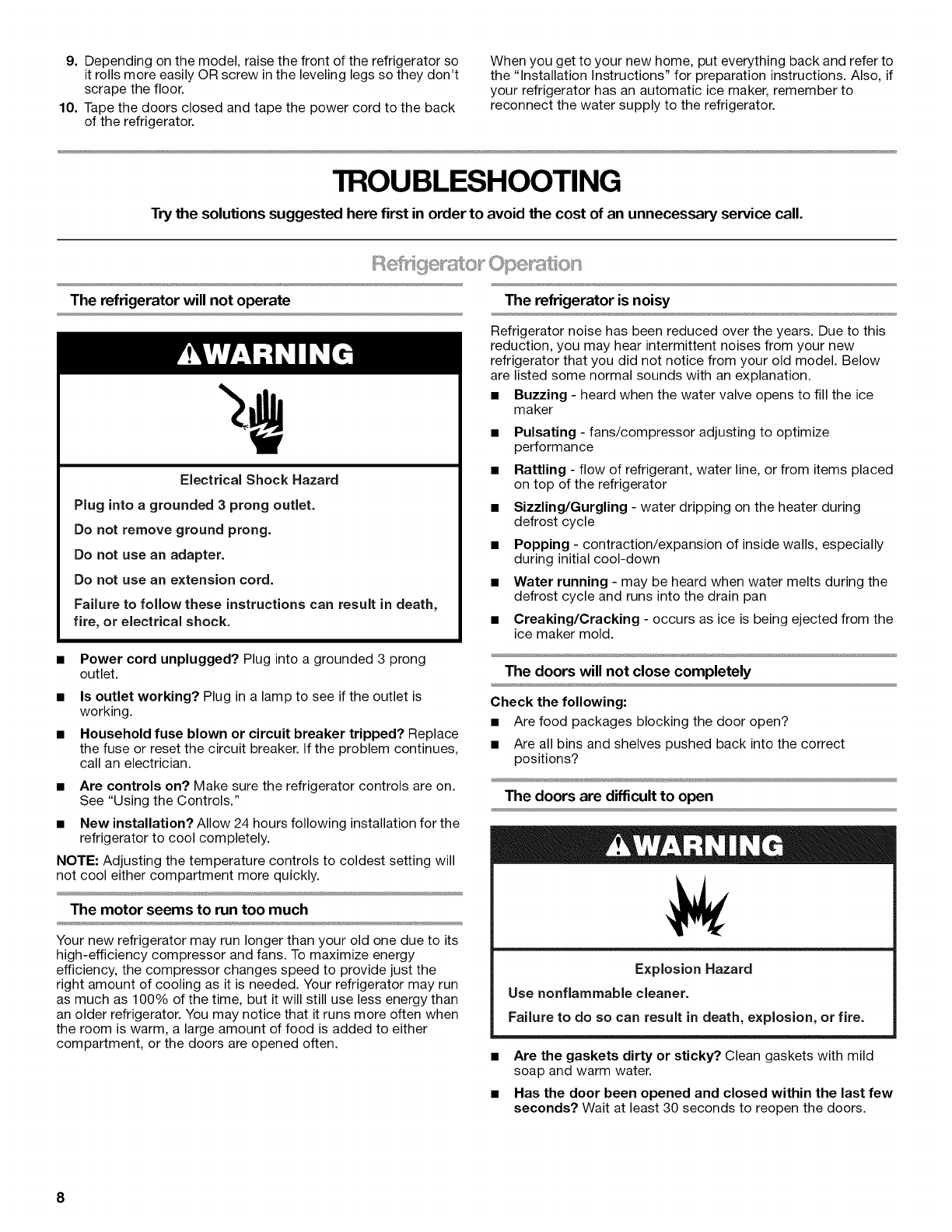
9. Dependingonthemodel,raisethefrontoftherefrigeratorso
itrollsmoreeasilyORscrewinthelevelinglegssotheydon't
scrapethefloor.
10.Tapethedoorsclosedandtapethepowercordtotheback
oftherefrigerator.
Whenyougettoyournewhome,puteverythingbackandreferto
the"InstallationInstructions"forpreparationinstructions.Also,if
yourrefrigeratorhasanautomaticicemaker,rememberto
reconnectthewatersupplytotherefrigerator.
TROUBLESHOOTING
Try the solutions suggested here first in order to avoid the cost of an unnecessary service call.
The refrigerator will not operate
Electrical Shock Hazard
Plug into a grounded 3 prong outlet.
Do not remove ground prong.
Do not use an adapter.
Do not use an extension cord.
Failure to follow these instructions can result in death,
fire, or electrical shock.
• Power cord unplugged? Plug into a grounded 3 prong
outlet.
Is outlet working? Plug in a lamp to see if the outlet is
working.
Household fuse blown or circuit breaker tripped? Replace
the fuse or reset the circuit breaker. If the problem continues,
call an electrician.
• Are controls on? Make sure the refrigerator controls are on.
See "Using the Controls."
• New installation? Allow 24 hours following installation for the
refrigerator to cool completely.
NOTE: Adjusting the temperature controls to coldest setting will
not cool either compartment more quickly.
The motor seems to run too much
Your new refrigerator may run longer than your old one due to its
high-efficiency compressor and fans. To maximize energy
efficiency, the compressor changes speed to provide just the
right amount of cooling as it is needed. Your refrigerator may run
as much as 100% of the time, but it will still use less energy than
an older refrigerator. You may notice that it runs more often when
the room is warm, a large amount of food is added to either
compartment, or the doors are opened often.
The refrigerator is noisy
Refrigerator noise has been reduced over the years. Due to this
reduction, you may hear intermittent noises from your new
refrigerator that you did not notice from your old model. Below
are listed some normal sounds with an explanation.
• Buzzing - heard when the water valve opens to fill the ice
maker
Pulsating - fans/compressor adjusting to optimize
performance
Rattling - flow of refrigerant, water line, or from items placed
on top of the refrigerator
Sizzling/Gurgling - water dripping on the heater during
defrost cycle
Popping - contraction/expansion of inside walls, especially
during initial cool-down
Water running - may be heard when water melts during the
defrost cycle and runs into the drain pan
Creaking/Cracking - occurs as ice is being ejected from the
ice maker mold.
The doors will not close completely
Check the following:
• Are food packages blocking the door open?
• Are all bins and shelves pushed back into the correct
positions?
The doors are difficult to open
Explosion Hazard
Use nonflammable cleaner.
Failure to do so can result in death, explosion, or fire.
Are the gaskets dirty or sticky? Clean gaskets with mild
soap and warm water.
Has the door been opened and closed within the last few
seconds? Wait at least 30 seconds to reopen the doors.
8



